The reason why the range is between [-Fs/2,Fs/2] is because Fs/2 is the Nyquist frequency. This is the largest possible frequency that has the ability of being visualized and what is ultimately present in your frequency decomposition. I also disagree with your comment where the range "could be between [-0.25,0.25]". This is contrary to the definition of the Nyquist frequency.
From signal processing theory, we know that we must sample by at least twice the bandwidth of the signal in order to properly reconstruct the signal. The bandwidth is defined as the largest possible frequency component that can be seen in your signal, which is also called the Nyquist Frequency. In other words:
Fs = 2*BW
The upper limit of where we can visualize the spectrum and ultimately the bandwidth / Nyquist frequency is defined as:
BW = Fs / 2;
Therefore because your sampling frequency is 6000 Hz, this means the Nyquist frequency is 3000 Hz, so the range of visualization is [-3000,3000] Hz which is correct in your magnitude graph.
BTW, your bin centres for each of the frequencies is incorrect. You specified the total number of bins in the FFT to be 512, yet the way you are specifying the bins is with respect to the total length of the signal. I'm surprised why you don't get a syntax error because the output of the fft function should give you 512 points yet your frequency axis variable will be an array that is larger than 512. In any case, that is not correct. The frequency at each bin i is supposed to be:
f = i * Fs / N, for i = 0, 1, 2, ..., N-1
N is the total number of points you have in your FFT, which is 512. You originally had it as length(y) and that is not correct... so this is probably why you have a source of confusion when examining the frequency axis. You can read up about why this is the case by referencing user Paul R's wonderful post here: How do I obtain the frequencies of each value in an FFT?
Note that we only specify bins from 0 up to N - 1. To account for this when you specify the bin centres of each frequency, you usually specify an additional point in your linspace command and remove the last point:
freqaxis=Fs*(linspace(-0.5,0.5, 513); %// Change
freqaxis(end) = []; %// Change
BTW, the way you've declared freqaxis is a bit obfuscated to me. This to me is more readable:
freqaxis = linspace(-Fs/2, Fs/2, 513);
freqaxis(end) = [];
I personally hate using length and I favour numel more.
In any case, when I run the corrected code to specify the bin centres, I now get this plot. Take note that I inserted multiple data cursors where the peaks of the spectrum are, which correspond to the frequencies for each of the cosines that you have declared (400 Hz and 1100 Hz):

You see that there are some slight inaccuracies, primarily due to the number of bins you have specified (i.e. 512). If you increased the total number of bins, you will see that the frequencies at each of the peaks will get more accurate.

